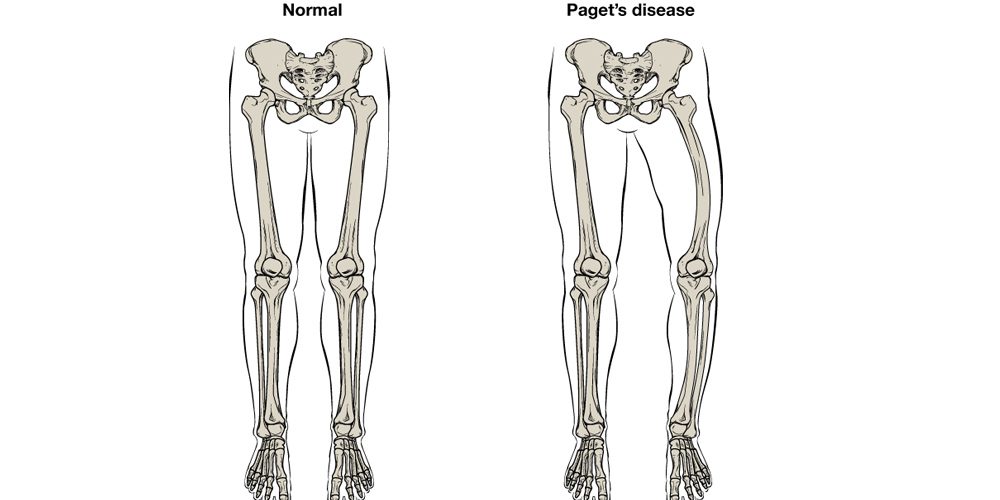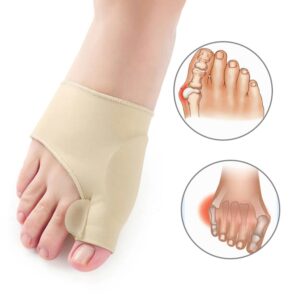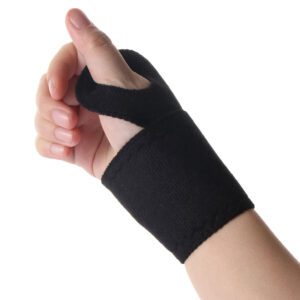Paget’s disease of bone is a rare bone disorder that can cause significant problems in the bones. In this article, we will discuss the symptoms, causes and treatment options for Paget’s disease of bone.
What is Paget’s disease of bone
Paget’s disease of bone is a disorder of the bone in which the normal process of bone remodeling is disrupted. This can lead to an increase in the size and density of the affected bones, as well as changes in their shape. Paget’s disease of bone most commonly affects the long bones of the body, such as the femur (thigh bone) or the humerus (upper arm bone).
What are the symptoms of Paget’s disease of bone
The symptoms of Paget’s disease vary depending on the severity of the condition. In its early stages, Paget’s disease of bone may not cause any symptoms. As the condition progresses, symptoms may include:
- Bone pain
- Joint pain
- Deformity of the affected bones
- Arthritis
- Hip Pain
- Hearing loss or headache when the skull is affected
- Tingling or Numbness in Hands, Arms, Legs and Feet
The disease can only affect one or two areas of your body or may spread over the total body. In most cases, the disease progresses very slowly and can be managed in almost all cases. In rare circumstances Pagnet’s disease of bone can lead to fractures and deformities. Affected bones are more prone to break. Additionally, extra blood vessels cause more bleeding during surgeries. Leg bones can bow and therefore limit your movement or affect the total ability to walk.
Osteoarthritis is another long term complication. If you’re not familiar with the term, we have a full article written about it here.
When Pagnet’s disease of bone happens in an area where nerves passes your bones, neurological problems can arise. The body parts that are most at risk are the spine and skull. Overgrowth of bone can put extra pressure on the nerves or even compress and damage them. Eventually, this can cause tingling, numbness, weakness and pain in the arm, leg, shoulder or feet.
In severe cases, even the heart is affected. The heart needs to work harder and pump more blood to the affected areas of the body and that ultimately can lead to heart failures.
About 1% of the people living with Pagnet’s disease of bone happen to get bone cancer. And while this is the vast minority, it is still worth mentioning at this stage.
Risk factors
Theroretically everyone is at risk of getting the disease. But certain risk factors favor the occurrance. These include:
Age – People of the age of 50 and above are at a greater risk
Gender – Men are affected more often then women
Family history – Having Paget’s disease of bone in the family puts you at a greater risk
Ethnicity – Paget’s disease of bone is more common among people of Caucasian descent. This inlcudes people from England, Scotland, central Europe and Greece. Scandinavia and Asia are also worth mentioning here.
What are the causes of Paget’s disease of bone
The exact cause of Paget’s disease is unknown. However, it is believed to be associated with a combination of genetic factors and environmental ones. Some scientists say that the disorder may be caused by a virus, while others believe that it may be the result of an autoimmune reaction.
Diagnosis of Paget’s disease of bone
When you visit a doctor he or she will check your body to see which areas are affected during the physical exam. X-rays and blood tests are valuable tools in the diagnosis. The most common blood test used to diagnose Paget’s disease of bone is called alkaline phosphatase. This test measures the level of alkaline phosphatase, which is an enzyme that is produced by Paget’s cells.
Your doctor may also order a biopsy of the affected bone. In this procedure, a small sample of bone is removed and examined under a microscope for Paget’s cells.
A bone scan, a test where radioactive material is injected into your body, shows the affected spots in your body by lighting up on the scan images.
How is Paget’s disease of bone treated
No symptoms – no treatment. That’s the first rule when evaluating your treatment options. If you’re not experiencing any symptoms your doctor will just monitor the situation for any changes over time. However, if the disease affects your skull or spine, your doctor might still recommend a treatment plan to prevent further complications, even if you don’t have any symptoms.
Pain relief and other medications
Bisphorosphonates are mostly used to treat the disease. This is a drug to treat Osteoporosis. Usually these medications are injected directly into the vein to prevent side effects such as stimach irritations when taken orally. Zoledronic acid (Zometa dn Reclast), Pamidronate (Aredia) ad Ibandronate (Boniva) are all examples for such drugs.
If your body refuses to tolerate Bisphosphonates, your doctor might prescribe Calcitonin. This is a hormone natrurally occuring in the human body which plays a role in the calcium regulation and bone metabolism.
Surgery
Surgery is an option if other treatments haven’t worked or if you experience complications, such as deformities, fractures or nerve compression.
Because the disease produces more blood vessels in the affected areas, blood loss during surgery is a severe problem. If you’re scheduled for surgery, you might need to take medications to reduce the activity of the disease upfront. That can minimize the risk of blood loss during surgery tremendously.
Paget’s disease of bone can be a serious condition, but with early diagnosis and treatment, most people are able to live normal, active lives. If you’re concerned about this disease, talk to your doctor. He or she can help you determine if the condition is a concern for you and develop a treatment plan, if necessary.
What can you do to prevent Paget’s disease of bone
If you’re diagnosed with Pagnet’s disease of bone you need to change your lifestyle. Lucily, there are a few things you can do yourself.
Nutrition your body well: Eating a healthy diet is important for Paget’s disease of bone as well for your overall health. Make sure to get enough calcium and vitamin D. These two nutrients are essential for strong bones. You can find calcium in milk, yogurt, cheese, broccoli, kale and other dark leafy greens. Vitamin D is found in fatty fish such as salmon, eggs and fortified foods such as milk and cereal.
Exercise regularly: Exercise is good for patients of the disorder as it helps to strengthen the bones and muscles around them. It also helps to improve balance and coordination, which can help to prevent falls – a common cause of fractures in Paget’s disease of bone.
Prevent falls: Paget’s disease of bone can make bones more fragile and susceptible to fractures. To help prevent falls, make sure to wear shoes that fit well and provide good support. Remove any tripping hazards from your home, such as loose rugs or cords.
Monitor the disease and listen to your body: If you have been diagnosed with the condition, it’s important to monitor the condition and see your doctor for regular checkups. He or she will likely order x-rays and blood tests to check for Paget’s cells and alkaline phosphatase levels. Treatment is usually only necessary if the disease is causing symptoms or complications.
Takeaways
Paget’s disease of bone is a disorder of the bone that can cause significant problems if left untreated. In this article, we have discussed the symptoms, causes and treatment options for Paget’s disease. If you are concerned that you might have this condition, talk to your doctor as he or she can help determine if Paget’s disease of bone is a concern for you and develop a treatment plan if necessary. There are also things you can do yourself to prevent Paget’s disease of bone, such as eating a healthy diet, exercising regularly and preventing falls. We would love to hear about your experiences with Paget’s disease of bone – please leave us a comment below!























